| Version 21 (modified by tshalif, 13 years ago) (diff) |
|---|
Table of Contents
How to use
Device Tilt
The device must be attached to the boat facing the rower, with the screen tilted slightly upwards and back. The application will not work with a forward tilt, nor with a more than 180 degree tilt backward.
Distance/Speed precision

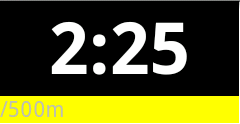
The application is programmed to update the distance and speed values by increments of 40m. Depending on the GPS reception quality, the figures shown may be anything between 'quite precise' to 'very inprecise'. The colour of the bar underneath the speed display will be coloured green for best precision, red for worst.
Graph Zooming
Due to device screen size limitations, not all graphs may be viewed at the same time. Currently up to 3 graph views may display simultaneously. Toggling the number of graphs is done by double tapping on any graph.
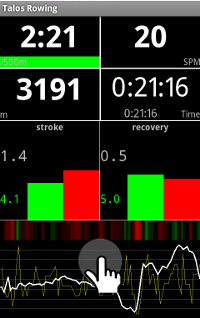
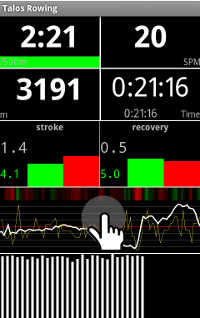
Graph Switching
An upward fling on a graph will replace it with another graph not currently shown.
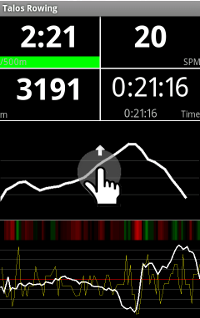
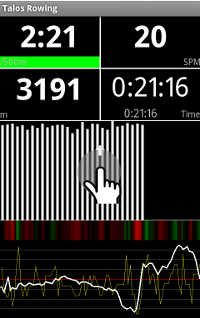
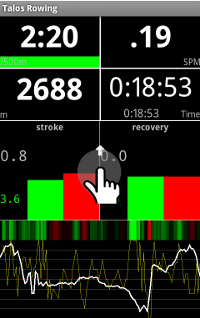
Recording/Replaying
It is possible to record a rowing session for later replay/analysis.
Recording
Session recording can be started/stopped either via the menu, or by pressing the distance meter:
- Using the context menu:

- Tapping the distance meter:
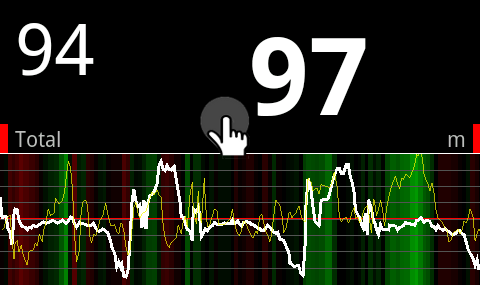
Replaying
To replay a previously recorded file, go to the context menu and choose a previously recorded file for replay. Fast forward/rewind is possible during replay by right/left flinging motion inside any of the graph areas.
- Start replay:
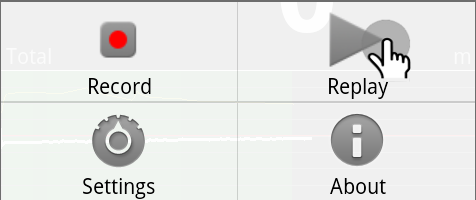
- Select file:
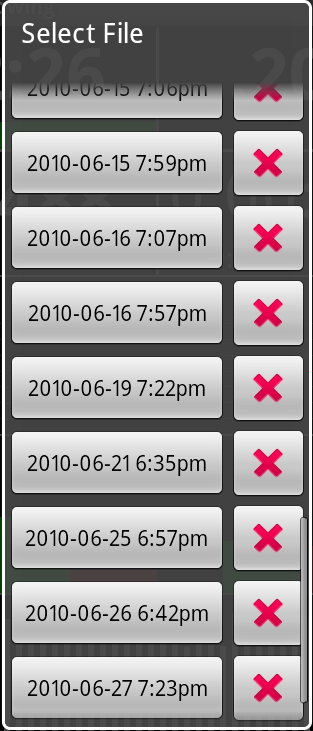
Sharing
It is possible to send/upload your session via Email while replaying a session file as described above. When viewing the message with your device's Email client, Talos Rowing will be automatically launched to preview the session file attachment (verified with the Android Gmail client).
- Replay a session file:
(see above) - Press 'share':

Real Time Remote Viewing (Experimental)
It is possible to send in real time the session rowing data over the net to a remote monitoring device (e.g. from a rower's device in a boat to a device held by a coach on shore or in another boat). Here are some conditions and limitations
- Only two devices can be connected at a time
- The device being monitored must be visible on the network (i.e. not blocked by a firewall or be behind NAT)
- Latency between the two devices should be minimal
The best way to connect the two devices is probably by using direct WiFi? connection. One way to achieve this is by turning one of the devices into a wireless access point and connecting to it from the other. The default settings assume that the monitored remote device is going to be the access point.
- Start broadcasting (monitored device):

- Start receiving remote data (monitoring device):

Stroke analysis graphs
- stroke power bars:

- continuous stroke/recovery/roll graph:

- stroke/recovery roll bars:

It is further possible to toggle the display of the roll view by a single tap on it:




- last stroke/recovery analysis graph:

